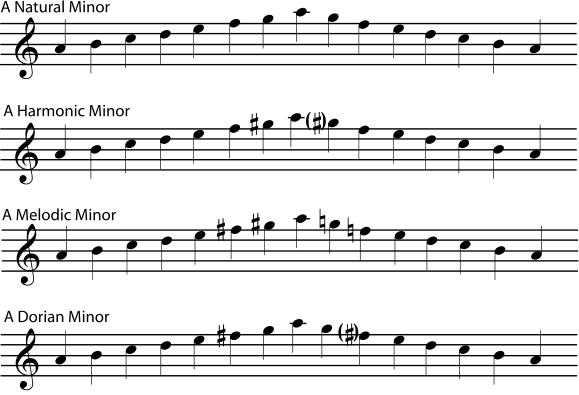
Tone – Semitone – Tone – Tone – Semitone – Tone and a half – Semitone Now raise the 7th note by another semitone so the pattern becomes: Simply work out the natural minor using the set minor scale intervals outlined above (Tone – Semitone – Tone – Tone – Semitone – Tone – Tone).

It’s easy to work out any harmonic minor scale. This is caused by the raised seventh note of the scale. The harmonic minor scale has a slightly more intense feel to it than the natural minor scale. This is because the key signature of D minor has one flat, B Flat. This tells the performer to play a B flat instead of a B natural each time. Notice how we have added a B Flat to the key signature at the start of the scale. Have a look/listen to the A Natural Minor being played on the piano: You have just played an ascending A Natural Minor Scale.Ĭome back down again and you have just played the descending A Natural Minor Scale. Look at a keyboard and play a scale (of all the white notes) starting on A and going up until you reach the A above it (I have highlighted these notes in red on the keyboard above). The key signature of A minor tells us that there are no sharps or flats (in other words, you play all the white notes on a keyboard and none of the black notes). Let’s have a look at two examples of natural minor scales: A Natural Minor Scale The natural minor scale follows the notes set out in the key signature for the scale without any changes. It is the same pattern of notes when going up the scale as when going down the scale. Tone – Semitone – Tone – Tone – Semitone – Tone – Tone

The set pattern of intervals for the notes of the natural minor scale is: It follows a set pattern of note intervals.

The natural minor scale is the most basic form of the minor scale. Let’s have a look at each minor scale in turn. However, there are in fact 3 minor scales which you will come across and can use:Įach scale sounds similarly “minor-like”, but they each also have their own unique flavour. The minor scale is the scale which sounds negative – it is used by composers to depict sad, melancholic or even angry/dramatic moods.


 0 kommentar(er)
0 kommentar(er)
